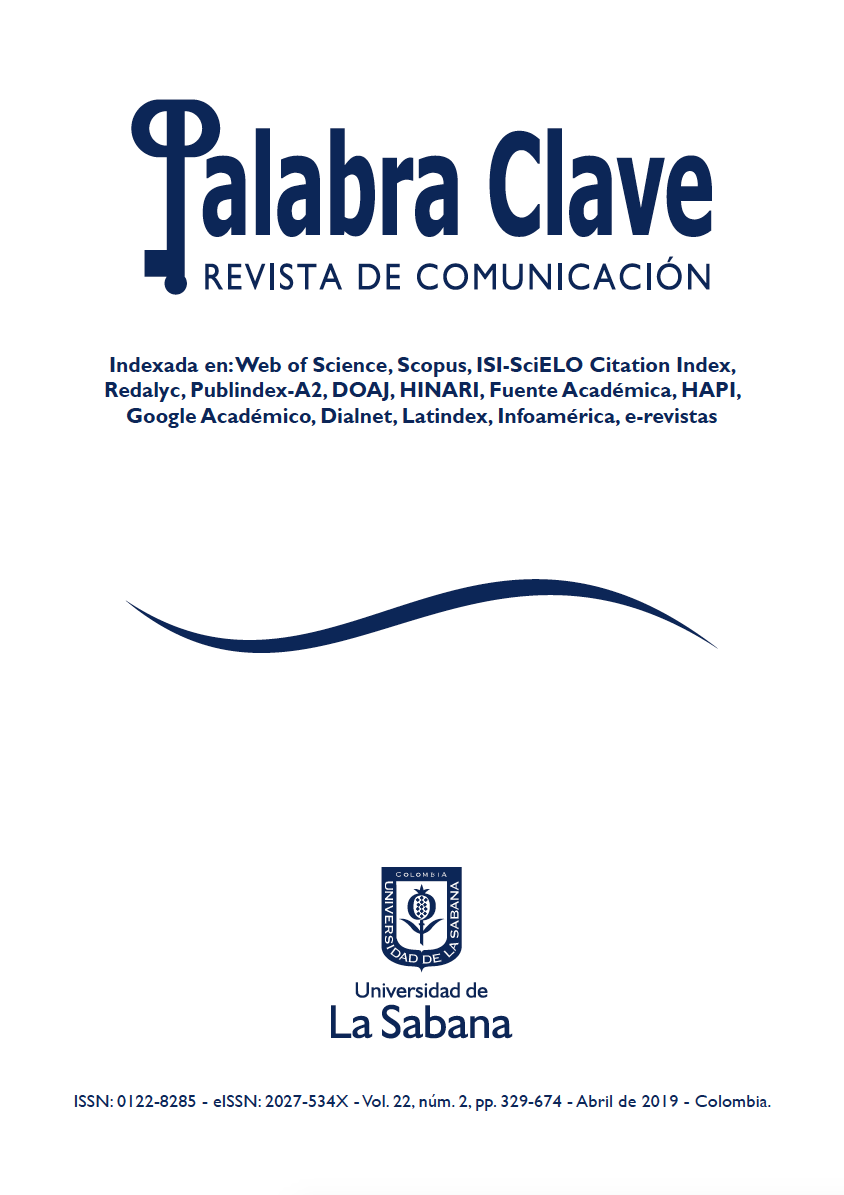Aproximación técnico-social al entendimiento de la disrupción digital
DOI:
https://doi.org/10.5294/pacla.2019.22.3.1Palabras clave:
Tecnología, sociedad, simbolismo social, construcción de la tecnología, construcción social de la tecnología, COSTResumen
Socio-technical approach to the understanding of the digital disruption
Abordagem técnico-social para a compreensão da ruptura digital
La sociedad y la tecnología se transforman mutuamente en una interacción constante que genera una serie de hibridaciones. No puede entenderse el avance de la tecnología sin comprender los profundos cambios sociales, políticos y económicos que afronta la humanidad; pero, tampoco es posible explicar a las sociedades sin los cambios producidos por la tecnología misma, una vez esta se instala y difunde dentro de las comunidades. En esta editorial se propone una aproximación técnico-social para entender esa interacción de la tecnología y la sociedad desde la investigación académica.
Cómo citar esta editorial / How to cite this editorial / Para citar nesta editorial
García-Perdomo, V. (2019). Aproximación técnico-social al entendimiento de la disrupción digital. Palabra Clave, 22(3), e2231. DOI: https://doi.org/10.5294/pacla.2019.22.3.1
Descargas
Citas
Bijker, W. E. (1997). The social construction of fluorescent lighting, or how an artifact was invented in its diffusion stage. In W. E. Bijker & J. Law (Eds.), Shaping technology, building society: Studies of sociotechnological change (Second ed., pp. 75–102). Cambridge, Mass: The MIT Press.
Bijker, W. E. (2012). The social construction of Bakelite: Toward a theory of invention. In W. E. Bijker, T. P. Hughes, & T. Pinch (Eds.), The social construction of technological systems: New directions in the sociology and history of technology (Anniversary). Cambridge, Mass: The MIT Press.
Bijker, W. E., Hughes, T. P., & Pinch, T. (Eds.). (2012). The social construction of technological systems: New directions in the sociology and history of technology (Anniversary). Cambridge, Mass: The MIT Press.
Douglas, S. (1987). Inventing American Broadcasting, Baltimore: Johns Hopkins University Press.
Klein, H. K., & Kleinman, D. L. (2002). The Social Construction of Technology: Structural considerations. Science, Technology & Human Values, 27(1), 28–52. DOI: http://doi.org/10.1177/016224390202700102
Howard, P. N. (2002). Network Ethnography and the Hypermedia Organization: New Media, New Organizations, New Methods. New Media & Society, 4, 550–574. DOI: https://doi.org/10.1177/146144402321466813
Latour, B. (2005). Ressembling the social: An introduction to actor-network-theory. New York: Oxford University Press.
Law, J., & Bijker, W. E. (1997). Postscript: Technology, stability, and social theory. In W. E. Bijker & J. Law (Eds.), Shaping technology, building society. Cambridge, Mass: The MIT Press.
Lewis, S.C. & Westlund, O. (2015) Actors, Actants, Audiences, and Activities in Cross-Media News Work, Digital Journalism, 3:1, 19-37, DOI: https://doi.org/10.1080/21670811.2014.927986
Mosco, Vicent (2004). The Digital Sublime: Myth, Power, and Cyberspace. Cambridge: MIT Press.
Plesner, U. (2009). An Actor-network perspective on changing work practices: Communication technologies as actants in newswork. Journalism 10(5): 604–26. DOI: https://doi.org/10.1177/1464884909106535
Schmitz, A., & Domingo, D. (2010). Innovation processes in online newsrooms as actor-networks and communities of practice. New Media & Society, 12(7), 1156–1171. DOI: https://doi.org/10.1177/1461444809360400
Streeter, T. (2010). The Net Effect: Romanticism, capitalism and the Internet, New York: NYU Press
Publicado
Cómo citar
Número
Sección
Licencia
Esta revista y sus artículos se publican bajo la licencia CreativeCommons CC BY 4.0 DEED Atribución 4.0 Internacional, usted es libre de: Compartir — copiar y redistribuir el material en cualquier medio o formato para cualquier propósito, incluso comercialmente. Adaptar — remezclar, transformar y construir a partir del material para cualquier propósito, incluso comercialmente. La licencia no puede revocar estas libertades en tanto usted siga los términos de la licencia.









